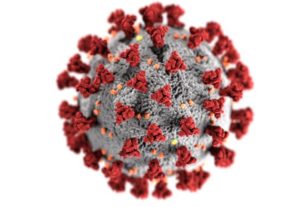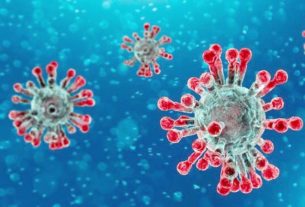From Our Bureau
27th MAY 2020
The Corona Virus (CPVID-19) pandemic situation remained grim globally, with the confirmed cases across the world soaring to 54,88,825 and the death toll reaching 3,49,095 in the 216 affected countries and territories, according to the latest update from the World Health Organization (WHO).
Globally, European region continued to be the worst-hit in terms of fatalities with 20,61,828 confirmed cases and 1,76,226 deaths. American region came next with 24,95,924 confirmed cases and 1,45,810 deaths. Eastern Mediterranean region reported 4,49,590 confirmed cases and 11,452 deaths.
Western Pacific region’s tally stood at 1,76,404 confirmed cases and 6,927 deaths. South-East Asia region recorded 2,18,523 confirmed cases and 6,359 deaths and African region witnessed 85,815 confirmed cases and 2,308 deaths. WHO Risk Assessment at global level remained very high.
WHO has published a case-control protocol for the assessment of risk factors for Coronavirus disease 2019 (COVID-19) in health workers. The primary objective of this study is to characterize and assess the risk factors for SARS-CoV-2 infection in health workers exposed to COVID-19 patients.
A scientific brief has been published by WHO investigating any association between smoking and an increased risk for COVID-19. At the time of this review, the available evidence suggests that in hospitalized COVID-19 patients, smoking is associated with increased severity of disease and death.
WHO has published a population-based age-stratified sero-epidemiological investigation protocol for COVID-19 virus infection. This protocol was designed to investigate the extent of infection, as determined by positive blood tests in the general population, in any country in which COVID- 19 virus infection has been reported.
Elements of the COVID-19 Strategic Response and Preparedness Plan (SPRP) have been updated and are reviewed on a regular basis by WHO in consultation of all six regional offices. These elements are laid out in the COVID-19 WHO Appeal.
WHO Director-General Dr Tedros Adhanom Ghebreyesus, in his regular media briefing on 27th May, said that 40 million health professionals sent a letter to the leaders of each of the G20 nations, calling for a healthy and green recovery from COVID-19.
“I fully support this. The human cost of COVID-19 has been devastating, and the so-called lockdown measures have turned lives upside down. But the pandemic has given us a glimpse of what our world could look like if we took the bold steps that are needed to curb climate change and air pollution. Our air and water can be clearer, our streets can be quieter and safer, and many of us have found new ways to work while spending more time with our families,” he added.
WHO published its manifesto for a green and healthy recovery from COVID-19, with six simple prescriptions: First, protect nature, which is the source of the air, water and food on which human health depends; Second, ensure that homes and health facilities have water and sanitation, access to clean and reliable energy, and are resilient to climate change; Third, invest in a quick transition to clean energy that will cut air pollution, so that when COVID-19 has been defeated people can breathe clean air; Fourth, promote healthy and sustainable food systems, to give people access to healthy and affordable food; Fifth, build cities that integrate health into all aspects of urban planning, from sustainable transport systems to healthy housing; And sixth, stop subsidizing fossil fuels that cause pollution and drive climate change.
“As some countries start to re-open their societies and economies, the question we must answer is whether we will just return to the way things were, or whether we will learn the lessons the pandemic is teaching us about our relationship with our planet. Building back better means building back greener.
“When I started as Director-General almost three years ago, one of the first things I did was to put out a call to all staff to contribute ideas for how to transform WHO and make it more effective. And I was asking many of my colleagues to generate crazy ideas to improve our organization. One of the ways I did that was by instituting “Open Hour”, where any staff member can come to talk to me about any issue they want, every Thursday.
“These ideas became the basis of the transformation process we have been implementing over the past few years, and I would like to thank all staff who contributed their ideas that are now changing the face of WHO. At one of the first meetings, a staff member proposed the creation of a WHO Foundation. The idea was to establish a way to generate funding for WHO from sources we haven’t tapped before, including the general public.
“Until now, WHO has been one of the few international organizations, which has not received donations from the general public. I immediately recognized the enormous potential in this idea thanks to the staff, which suggested this idea. It is well documented that one of the greatest threats to WHO’s success is the fact that less than 20 percent of our budget comes in the form of flexible assessed contributions from Member States, while more than 80 percent is voluntary contributions, from Member States and other donors, which are usually tightly earmarked for specific programmes.
“In effect, that means WHO has little discretion over the way it spends its funds, almost 80 percent of its funds. We have been working hard to encourage Member States to increase the proportion of flexible funds they give us, and we are very grateful for those countries that have given us greater flexibility in recent years and there is improvement. But for WHO to fulfil its mission and mandate, there is a clear need to broaden our donor base, and to improve both the quantity and quality of funding we receive – meaning more flexible funding.
“Since February 2018 we have been hard at work supporting the establishment of the WHO Foundation after hard work of two years it gives us enormous pleasure to launch it officially and to launch the WHO Foundation. This is a historic step for WHO, as an integral part of our resource mobilization strategy to broaden the contributor base.
“The WHO Foundation was not ready to launch when the COVID-19 pandemic began, so with the support of the United Nations Foundation, the Swiss Philanthropy Foundation and several other partners, we launched the COVID-19 Solidarity Response Fund. In just two-and-a-half months, this fund has raised more than 214 million U.S. dollars from more than 400,000 individuals and companies, including 55 million dollars from the “One World: Together at Home” virtual concert. These funds have been used to buy lab diagnostics, personal protective equipment, and to fund research and development, including for vaccines.
“The Solidarity Response Fund is powerful proof of concept for the WHO Foundation. To further promote the Solidarity Response Fund, WHO has partnered with the animation studio Illumination to launch a public service announcement today aimed at children featuring the beloved animated characters the Minions and Gru, voiced by the actor Steve Carrell, to promote ways for people to stay safe from COVID-19.
“The Solidarity Response Fund will continue to receive donations to support WHO’s work on COVID-19, while the WHO Foundation will help to fund all elements of WHO’s work and be fully aligned with our priorities,: the WHO Director-General pointed out. (eom)


